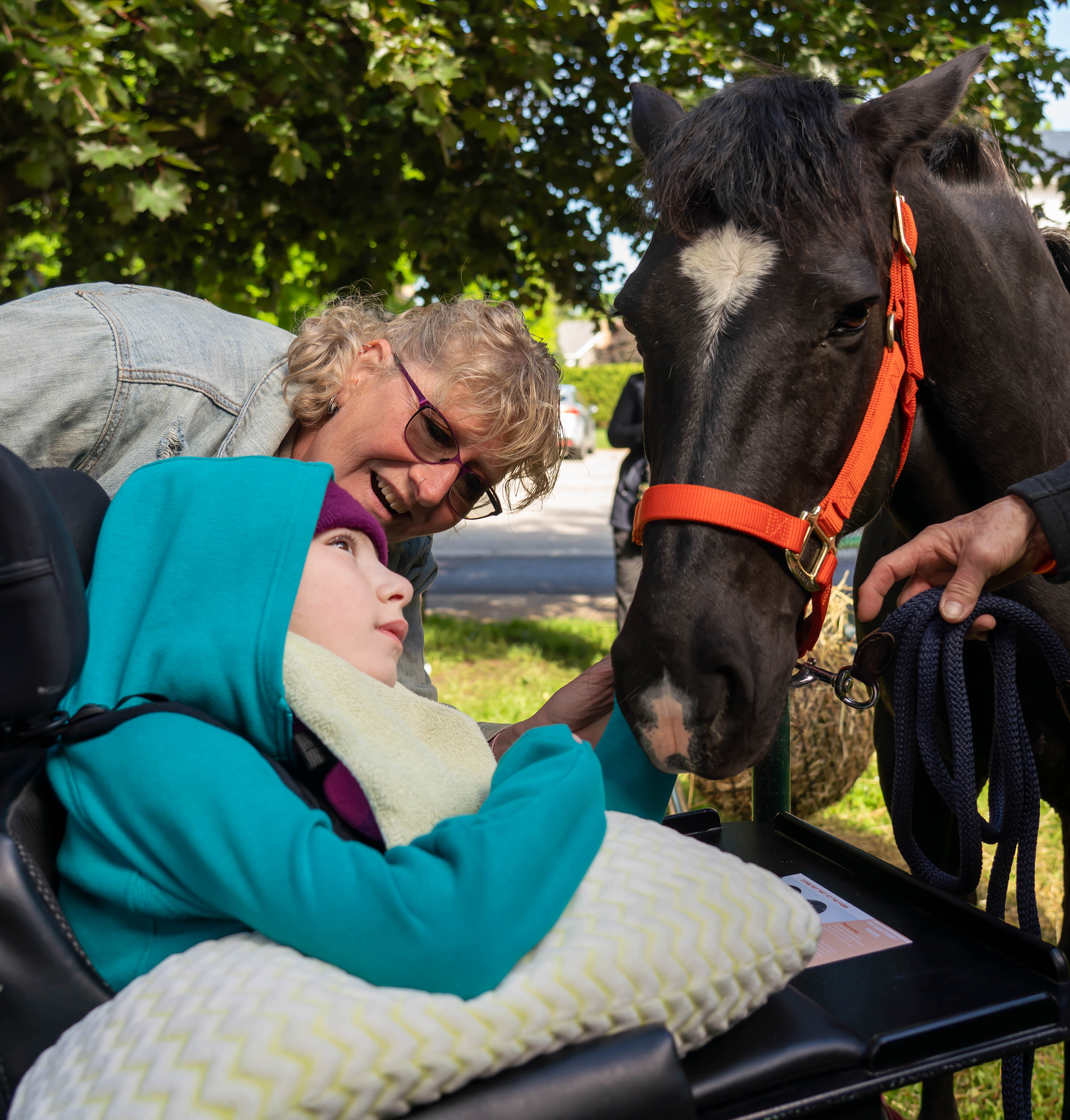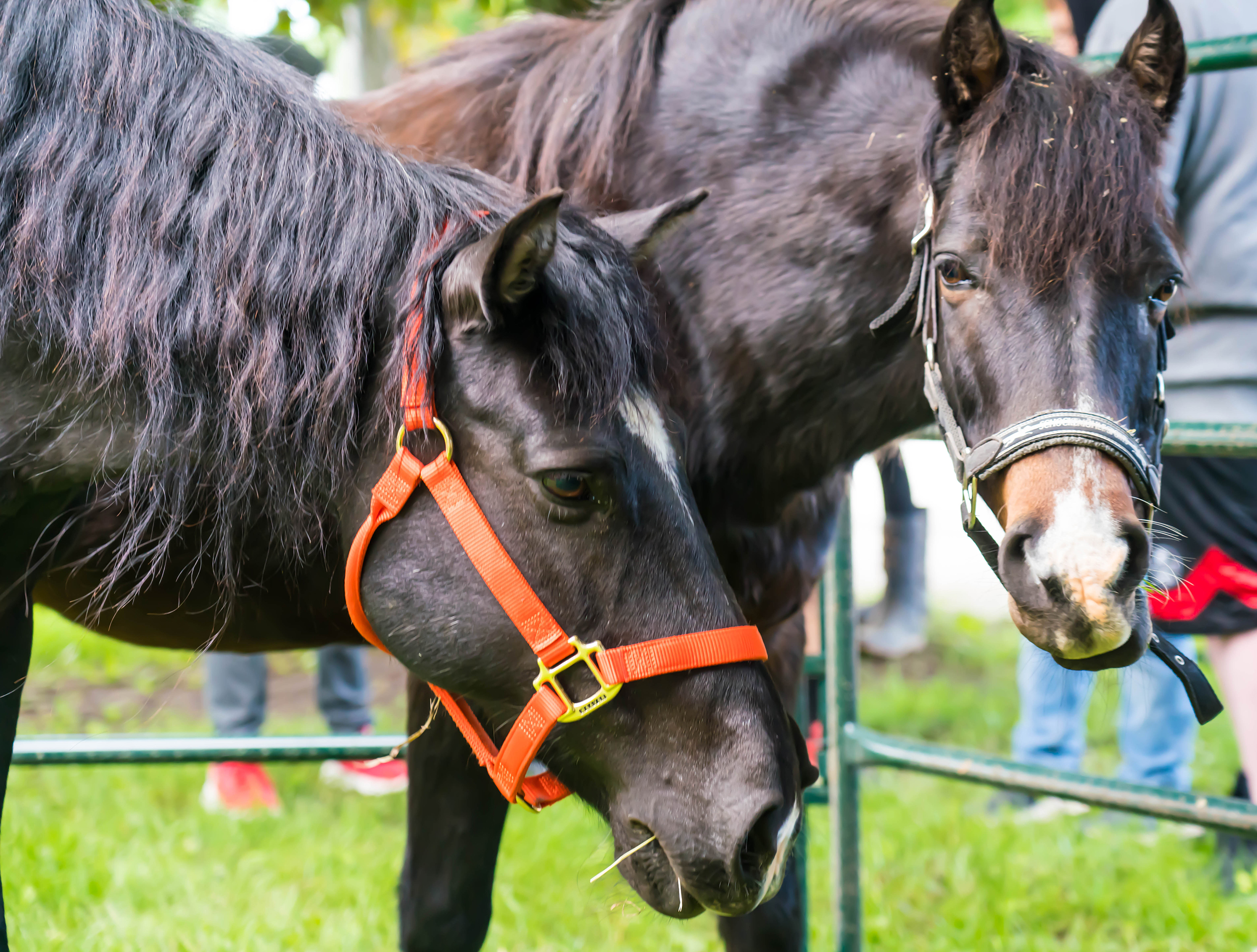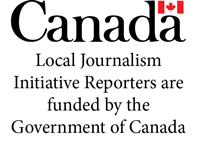SEAFORTH – Before the arrival of European settlers, the Original People of this land had incredible helpers called Ojibwe Spirit Horses.
Ojibwe Spirit Horses were in North America by the thousands before contact.
According to the Ojibwe Horse Society, “DNA evidence shows they are different from European-introduced horse breeds in distinctive ways that made them an integral and harmonious part of the North American boreal forest. The testimony of Indigenous Elders affirms they have had a spiritual and working relationship with the Ojibwe Horse throughout time.”
These friendly Indigenous horses roamed free, but they were always around to help the locals with the heavy lifting. They offered up their small backs to assist the People for things like hauling logs in from the forest or ice when it was brought to the camps.
Their compact bodies allowed them to weave in and around the trees in the forests, making them valuable assets.
The relationship between the People and these special little horses was very harmonious.
That special bond was nearly destroyed by the coming of the settlers, who at first used them horribly during the gold rush, and eventually declared them a nuisance, the government ordering them all to be slaughtered.

Youth attendee Charlie Brown pets Odamia (I Play) with her EA Diana Steep watching. The young lady and the horse spent a long time looking at each other earlier in the morning of June 9, bringing tears of joy to Steep. (Cory Bilyea photo)
In 1977, there were only four of these small and resilient horses left. Today there are less than 230, with less than 30 breeding stallions.
Two of these beautiful creatures visited Seaforth Public School on June 9 as part of an ongoing initiative by the Avon Maitland District School Boards (AMDSB) Indigenous Education program.
“The initiative aims to increase engagement and awareness with AMDSB students about this unique breed of horse that was a historic part of society until they were considered pests by newcomers and brought to the brink of extinction in the early 1970s,” AMDSB said in their board meeting highlights on May 24.
Dale and Sallianne Patch run Aspens Ojibwe Horse Sanctuary just outside of Stratford and, in collaboration with Christin Dennis, a local knowledge keeper, have been bringing a message of hope for these horses to the schools in the AMDSB region.
The sanctuary focuses on three key elements, preservation, protection, and promotion of the Ojibwe Spirit Horses.
Surrounded by children, Odamia (I Play) and Takona (I Hold Him) were calm, happily munching on the school’s grass and their net full of hay, taking in the excitement of the moment with the kids and making friends.

Sallianne Patch watches while one of the youth pets Odamia (I Play) during a visit to Seaforth Public School on June 9. (Cory Bilyea photo)
Odamia spent several minutes gazing into the eyes of a young lady named Charlie Brown, who was quite taken by the horse. That moment in time captured the pure gentleness of this special breed, bringing tears of joy to Diana Steep, the educational assistant (EA). She accompanied Charlie out to see the horses.
Sallianne spoke to the kids, telling them the story of the Ojibwe Spirit Horses, whose great, great, great-grandchildren were standing before them now.
Describing the unique relationship between the Spirit Horses and the People, the large group of young people was mesmerized, quietly listening to Sallianne as she went on to talk about what happened next.
“Then a thing called colonization happened. That was when people came from other countries, like my country, England… and they really liked Canada, or Turtle Island as First Nations call it. And First Nations were amazing, because they welcomed them, taught them how to live off the land and that was OK for a while,” she said.
“But the newcomers wanted more and more, they didn’t respect the Indigenous way of life, they thought it was strange, some of the ceremonies they had and so on, so they moved the First Nations onto reserves… and gave them very strict rules that they had to follow that was harmful to the Indigenous way of life.”
Referring to the infamous “Klondike gold rush,” Sallianne said, “They didn’t respect these Indigenous horses, they were very cruel to them,” asking the children if they had heard about the gold rush.
Several of the youth nodded or spoke up, saying they had heard of that part of history.
Sallianne went on to talk about the people who used the Spirit Horses so severely, saying, “They needed something to carry their equipment, their tents and everything else, so they caught these ponies that were so friendly and easy to get along with; they wanted to please the people. They loaded them up way too heavy, with heavy loads, and they didn’t feed them or treat them well. So, many of them died.”
National Park Service (NPS) wrote the following about the horses that died on White Pass Trail. This difficult-to-reach area is spread throughout the wilderness of the Skagway River Valley and into the Yukon.
“Horses were not equipped with the constant physical demands, boggy mud holes, and slippery rocks. No one knows the exact amount of animals that took the two trails but it is estimated that 3,000 horses died in a one-year period on the White Pass Trail, earning it the nickname ‘Dead Horse Trail.’”
After the gold rush ended, the government declared the Ojibwe Spirit horse to be a nuisance and a health hazard to the Indigenous People who kept the horses on the reserves with them, ordering the animals to be shot, destroyed, or sent to glue factories.
By the late 1970s, there were only four left, and these horses were rounded up, hidden by four men, two non-natives, and two of the People, who then shipped them to Minnesota, where they were safe.
Unfortunately, these four horses were all female.

Christin Dennis, local Indigenous knowledge keeper, speaks to the youth gathered at Seaforth Public School on June 9 about the Ojibwe Spirit Horses. (Cory Bilyea photo)
They were bred to a Spanish horse named Smokey, Sallianne told the students.
“And from there, we now have six generations down.”
The children had the opportunity to ask questions, with one youth asking if they were all the same colour.
Sallianne said, “Ojibwe horses are black or dark coloured bay, or there’s another colour called grullo, which is sort of a beige colour, and it’s very pretty. We have one at the farm.”
The two Spirit Horses that visited Seaforth were a male and a female, Sallianne told the youth in response to another question.
“We have their two children back at the farm,” she said. “It’s very neat and unique to have a whole family intact.”
Dennis spoke to the youth next, reminding them of previous lessons he had shared with them, including a song he had taught them, which they remembered and sang along with him while he played his hand drum.
Monique Pregent, Indigenous education lead at AMDSP, also spoke about previous sessions with the children where they had learned to say several common words in Anishinaabemowin (Ojibway). They were happy to repeat what they had learned.
The student’s then put on a small art show, presenting their drawings about the experience of learning about the Ojibwe Spirit Horses as Pregent, Dennis, and the Patch couple looked at each one, the kids receiving some one-on-one attention and praise for their creations.
At long last, the youth were able to pet the horses, lining up, respectfully approaching their small guests. Their smiling faces were testimony to the unique and wonderful experience they had learning about the Spirit Horses.




